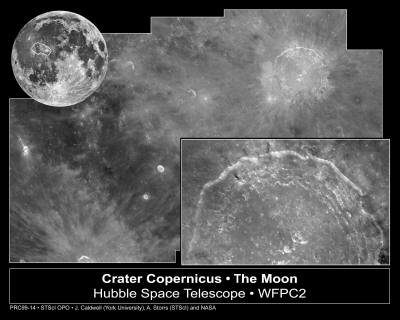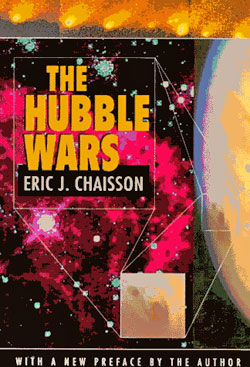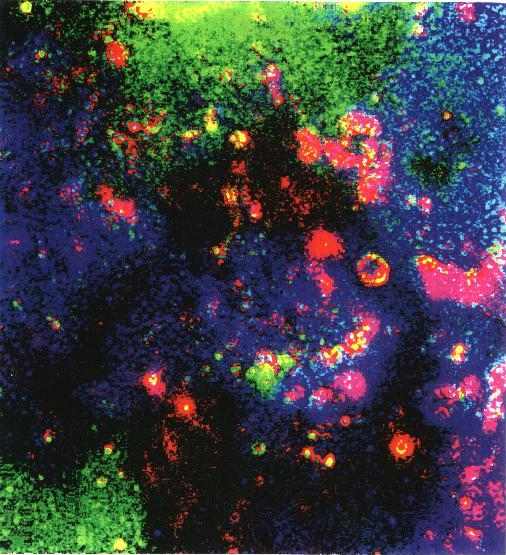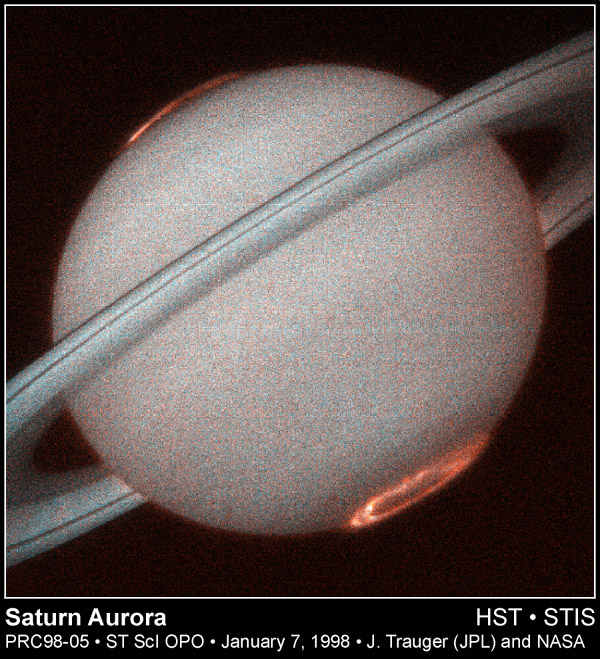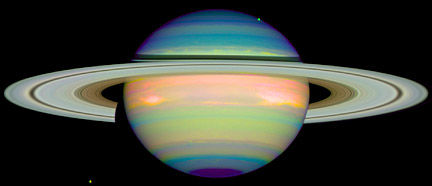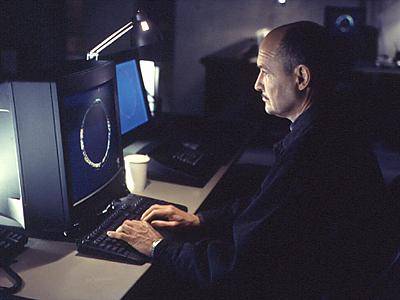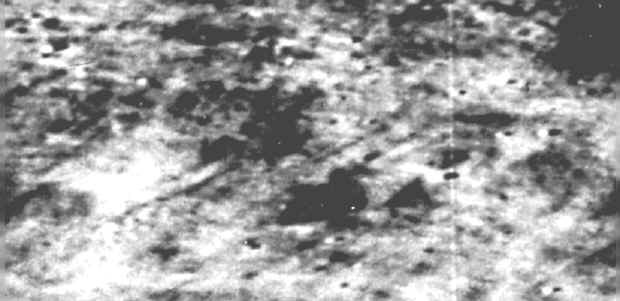|
by Richard Hoagland from EnterpriseMission Website
You see, for more than 5 years, the STSI and NASA have been consistently claiming that the Hubble flatly could not image the Moon! HST image of the Moon
Using the ostensible reason that the Moon was "too bright" to image with the sensitive telescope's instruments, employees of both agencies have been publicly and privately suppressing any efforts - especially those of this investigation - to "Shoot the Moon."
Once we had determined that there were numerous anomalies and potential artifacts on the Lunar surface, Enterprise principal investigator Richard C. Hoagland began an effort to use the Hubble's exquisite instruments to get close up views of some of these suspect areas.
The response at the time was the "too bright" argument. According to Eric Chaisson's book, "The Hubble Wars," the space telescope's visible light cameras are color calibrated by turning them on the clouds in the Earth's own atmosphere, which are several levels of magnitude brighter than the Moon at high Lunar noon.
This is done on a ongoing, almost daily basis, meaning that the HST's instruments are regularly exposed to this potentially damaging amount of light.
When it was pointed out that if STSI's argument was correct, the Hubble should have been long since disabled, the response was stony silence. It was also suggested that the gain controls on the HST could have simply been turned down to limit the amount of light allowed into the instruments. This too was never addressed directly by either NASA or STSI.
However, a number of independent researchers like JJ Mercieca of Malta UFO research, continued to press the issue and got into many e-mail exchanges with various project scientists, only to hit the same "too bright" brick wall;
Eventually, the pressure built and NASA dispensed two public affairs officers, Don Savage and Ray Villard, to the Art Bell show to quell the controversy and address other issues regarding the use of the telescope to image the Hale-Bopp comet. They again repeated the "too bright" argument in response to Bell's question regarding the use of Hubble to image the Moon.
NASA's previous position becomes even more complicated when you consider that the image released was taken literally at high Lunar Noon, when the disk is at it's highest reflectivity. If the Moon could actually have damaged Hubble's optics, this would have been the worst time to try an experiment.
The images released are roughly of the same quality as high altitude UV-VIS images from the Navy's Clementine probe (in other words, not very good). While it seems the visual images should have been much better, what we find interesting is not what was actually released, a fairly mundane image of the craters Copernicus and Kepler, but what was not released. The Hubble is equipped with a secondary instrument for taking images in the infrared band.
This instrument is very similar to the infrared camera on the aforementioned Clementine mission, which may explain the reason why we have not been allowed to see this data. A few years back, an Enterprise researcher had come across an image on the USGS web site.
APP172.jpg (click above image) appeared to be a mosaic of Clementine infrared spectral data over the Sinus Medii - Hyginus Rile area. There was just one problem. What the image showed was immense geometric structures both miles above and miles below the Lunar surface.
The vast changes in coloration indicated that what Clementine was seeing below the surface was not the expected mineral deposits and metallic outcrops randomly distributed beneath the surface, but an ordered, organized city laid out beneath the surface and protected above by miles of vertical glass structures. Within hours this leaked image had disappeared from the web and we assumed that was the last we'd ever hear of infrared images of the Lunar surface.
The telescope just happens to include a number of other instruments besides the visible light camera, an infrared camera of course among them. The timing gets even more interesting when you consider that the supposed reason that Hubble was pointed at the Moon in the first place was to actually get data about the Sun.
Using something called the the Space Telescope Imaging Spectrograph, or STIS (basically an infrared camera), Hubble measured the reflected sunlight to calibrate the Sun's spectrum, which will let astronomers gauge how other bodies in the solar system absorb and reflect sunlight.
As you can see from the image above, the STIS is capable of collecting images of stunning clarity, even if the object is millions of miles distant, as Saturn is.
There is another instrument, the Near Infrared Camera and Multi-Object Spectrometer (NICMOS), which is capable of garnering even more spectacular views of our distant neighbors ...
Given the breath-taking clarity and resolution of our far away "Hyperdimensional - Inwelling" companion, just imagine what could be resolved if the instrument was pointed at the Moon, only 250,000 miles away ...
It will be interesting to see if the commitment to release this sort of data to the public turns out to be as reliable as NASA's word on the capabilities of its instruments.
Because there is a war going on.
During the last several years, we have been consistently impressed with the ability of TV producer Chris Carter to predict on his two television shows, "The X-Files" and "Millennium," exactly the scenarios we had discussed behind the scenes in private.
Time after time we would arrive at a consensus on the meaning or probability of certain data points, only to see them suddenly appear on one (or both) of Carter's shows in "fictionalized" form.
While "X-files" has dealt with broader issues of military/intelligence community cover-ups of UFO related phenomena, "Millennium" has dealt with the other side of the coin - the influence of secret societies both in everyday life and at all levels of government. "Millennium" has used the mythical "Millennium Group" (not to be confused with the scientific organization of the same name) as a sort of composite of many differing real life secret societies.
In Part two, "Roosters," the third group was revealed to be a secret organization of Nazi's based in South America. The essence of the split within "Millennium" centered around whether the coming "millennial event" in the shows mythology would be a spiritual or secular event. The "Roosters" believed that the event would be religious in nature, that the messiah would come after the catastrophe and establish a new kingdom on Earth.
The other group, the "Owls," believed that whatever would come would be a physical event but secular in nature. The "Roosters" sought to warn the world, quietly pushing the issues into the fore front in the hopes of saving as many souls as possible. The "Owls" conversely believed that nothing could stop the event, and that there was no point in causing a panic over the issue by crowing the warning from the hills.
Ultimately, the "Roosters" won out and the leaders of the Nazi faction (named "Odessa") were destroyed and the cross came into the possession of the "Roosters."
The added touches of the "True Cross" and the "Nazi connection" (which are both integral to our model of the "real life" conflict) only deepen our suspicion that there is much more to Mr. Carter's "fiction" than meets the eye. It is just a bit too cute, a bit too prescient and neatly tied together to be a coincidence, especially considering we have never revealed these details of our working model!
But none has been as rich and productive an area in his searches as the region of the crater Kepler. Put simply, the area around Kepler is littered with geometric patterns and buildings.
The ejecta blanket of the crater itself appears to have been altered, with a city built right on top of it.
The "Rampart" and "Longhouses" built on the ejecta blanket of Kepler.
The "Rampart" is easily the most stunning object in the entire region, consisting of concentric, rectangular walls and rounded forward "buttress." No known (or even imagined) geologic process can account for such an object on the surface of such a geologically simplistic world as our Moon. It bears all the hallmarks of an eroded artificial edifice, and none of the characteristics of a landscape formed almost exclusively by cratering.
Add to that the fact that it appears on ejecta blanket of Kepler, a feature formed some 3.5 billion years after the cessation of any lava flows or possible tectonic activity, and it becomes even more remarkable.
|

